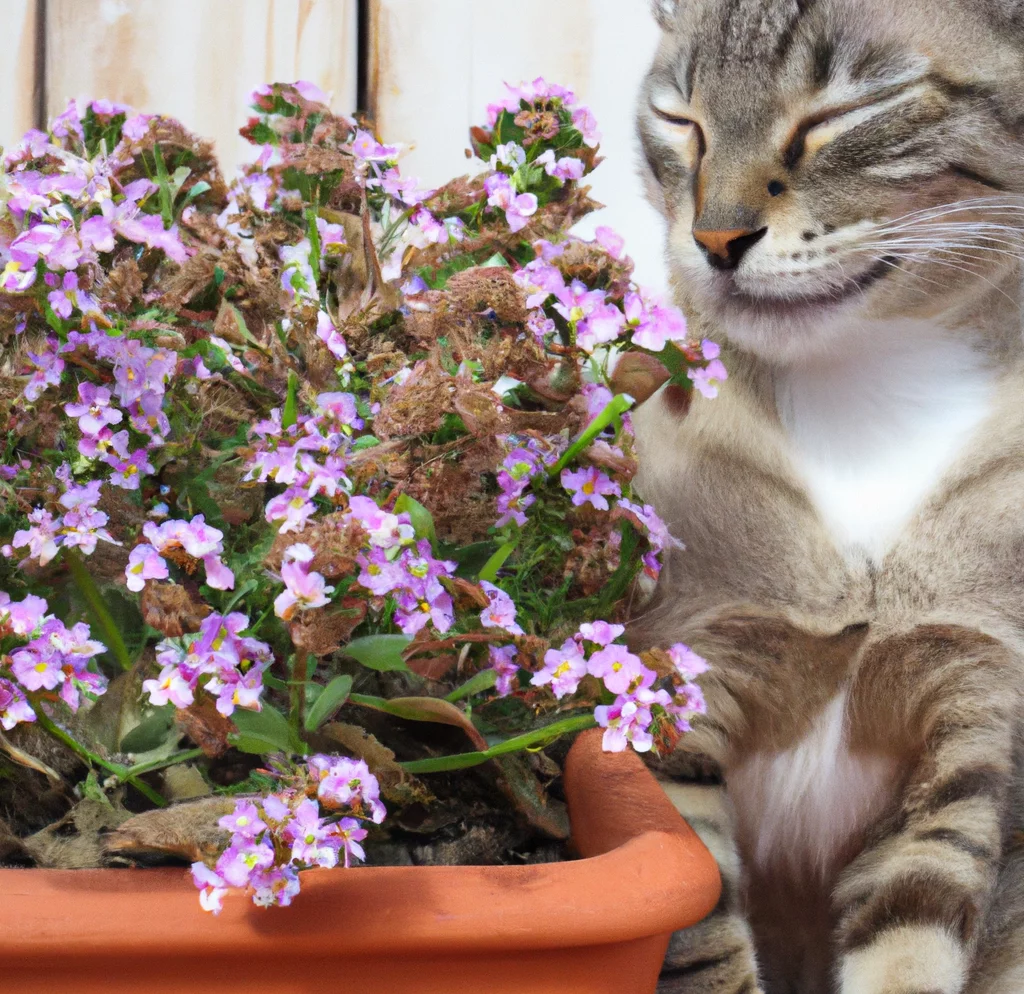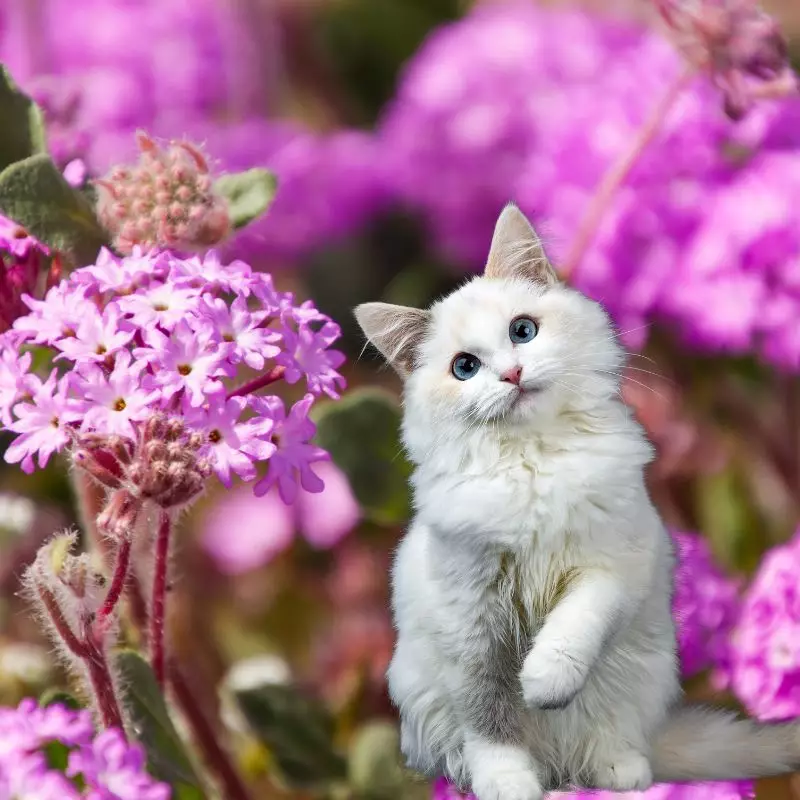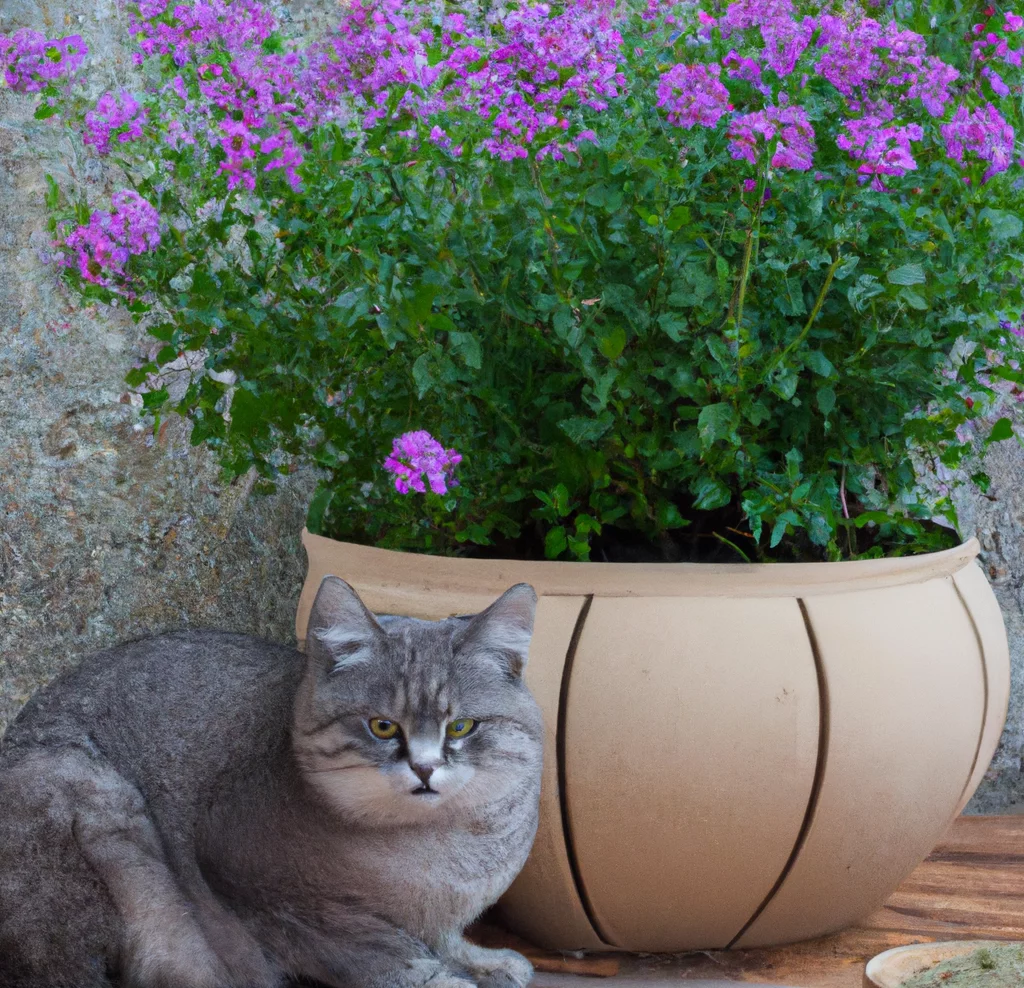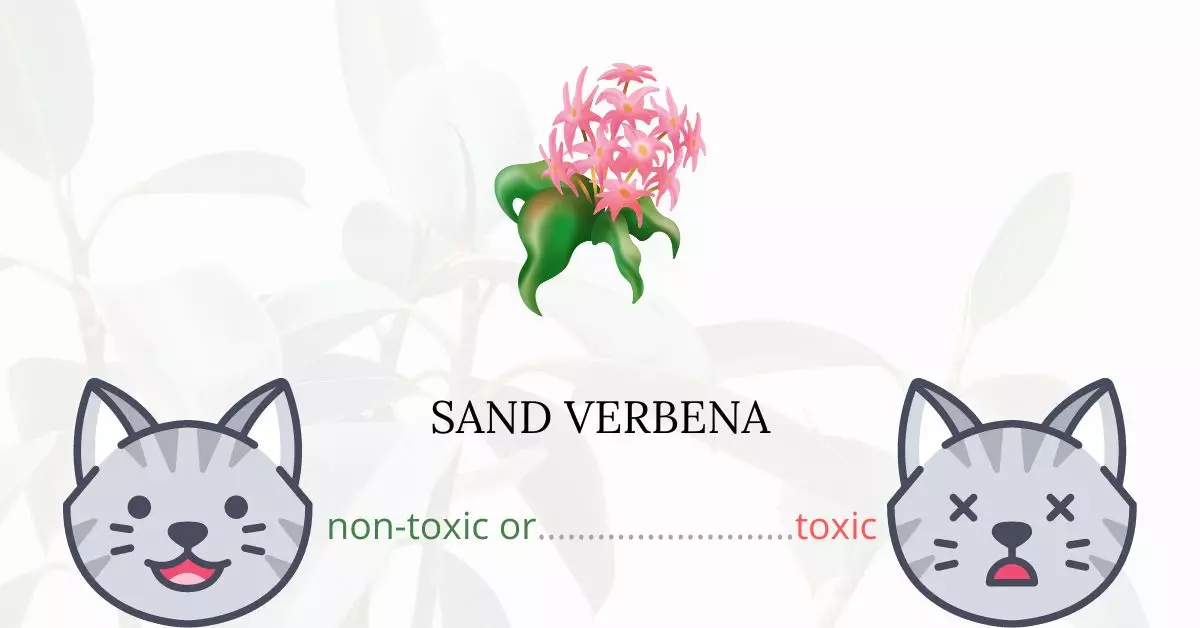Sand Verbena is not toxic to cats. In fact, it’s among the varieties of verbena recognized as safe for feline companions.
This information has been confirmed through our collaboration with a team of experienced DVMs (doctors of veterinary medicine). Through their invaluable insights and rigorous analysis, we offer up-to-date and accurate information concerning the potential risks posed by various plants, with an emphasis on Sand Verbena in this context. To further ensure the credibility of our information, we have also conducted thorough research using high-authority websites such as the ASPCA (American Society for the Prevention of Cruelty to Animals) and PetMD.
This comprehensive approach guarantees that cat owners can feel confident about the safety of Sand Verbena in their gardens.
Can Cats Eat Sand Verbena?

If your cat eats a fair amount of Sand verbena, it won’t suffer any serious consequences. Let us remind you that your cat shouldn’t eat this plant on a regular basis. Please be aware that depending on how much is consumed, any plant might cause harm to your cat’s system.
Even the most harmless plants can make you sick if you consume them in huge amounts. Visit the veterinarian right away if you observe that your cat is acting strangely.
What is Sand Verbena?

Sand Verbena (Abronia fragrans), a herbaceous perennial with an erect or spreading growth habit, grows from a taproot and has sticky, hairy stems that can range in length from 7.1 inches to 3.3 feet.
Although mainly white, the blossoms can have green, purple, or pink undertones. The simple, opposite, elliptical or linear sticky leaves are simple in shape. It is grown in gardens for its lovely blossoms and fragrance, as well as to attract butterflies. Its shape may be exceptionally resistant to sun and heat. The fruits are egg-shaped achenes about 0.1″ long, glossy, and black or brown.
The plant is used by the Native Americans of the Southwest as an appetite stimulant, a stomachache remedy, and a wash for cuts and insect stings.
Keeping Cats Away From Sand Verbena
 Try putting pinecones, brush, or twigs over the soil’s surface because cats don’t like to step on rough or prickly surfaces. Wearing gloves is recommended since thorny trimmings from raspberries, holly, or roses can be particularly effective but also prick you. They have a difficult time digging in rough mulch, such as coarse wood chips or stones.
Try putting pinecones, brush, or twigs over the soil’s surface because cats don’t like to step on rough or prickly surfaces. Wearing gloves is recommended since thorny trimmings from raspberries, holly, or roses can be particularly effective but also prick you. They have a difficult time digging in rough mulch, such as coarse wood chips or stones.
Growing cat-repelling herbs like rosemary, lemon thyme, rue, lavender, or Russian sage can be a better alternative to manufacturing sprays. Alternatively, you might cover the areas you want to preserve with dried plant leaves. They may also be discouraged by prickly-leaved plants like sea holly and globe thistle. Find Coleus Canina, often known as the scaredy cat plant, which is supposed to be particularly efficient at deterring cats.
Plants to Avoid For Your Cats
If you are a cat owner and unsure if the plants growing in your yard are harmful to your cats, check out this list of toxic plants for cats. You can also check our list of non-toxic plants for cats.





